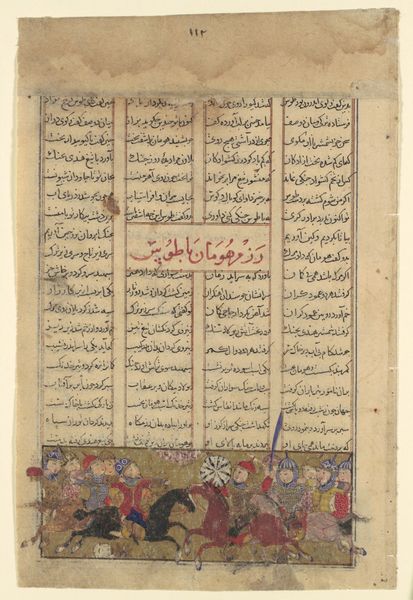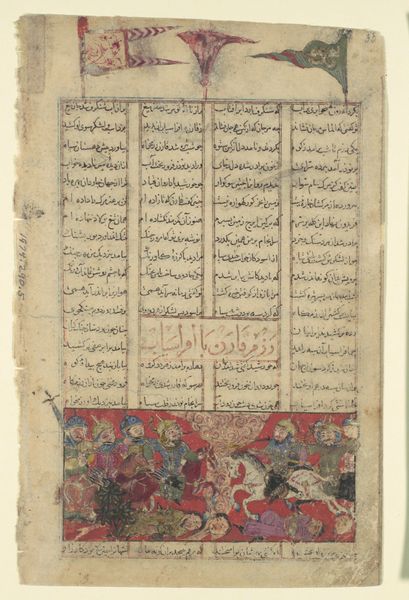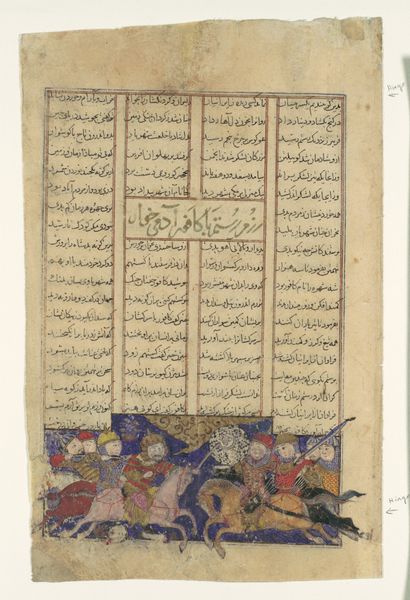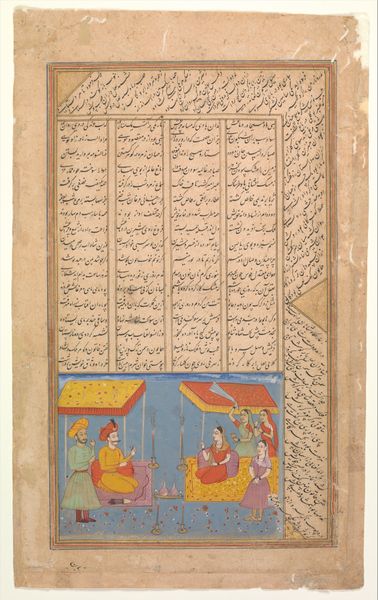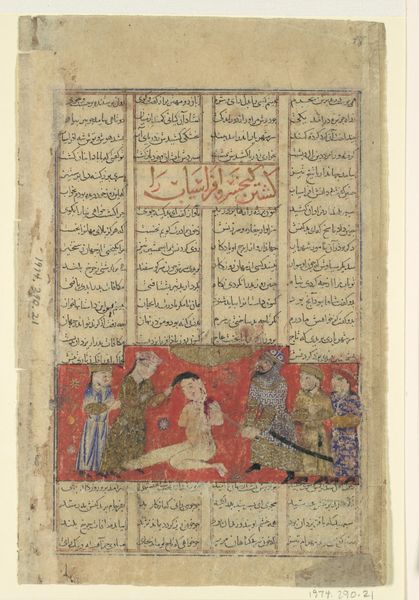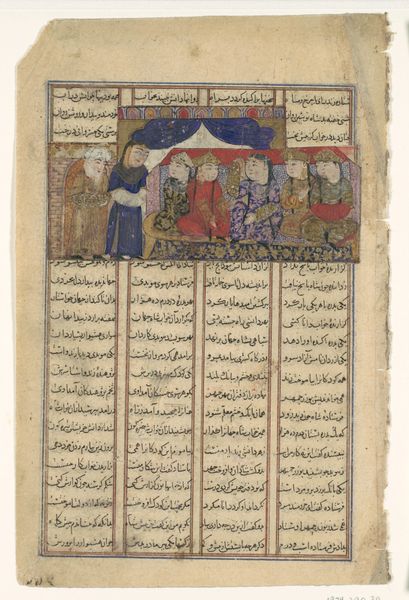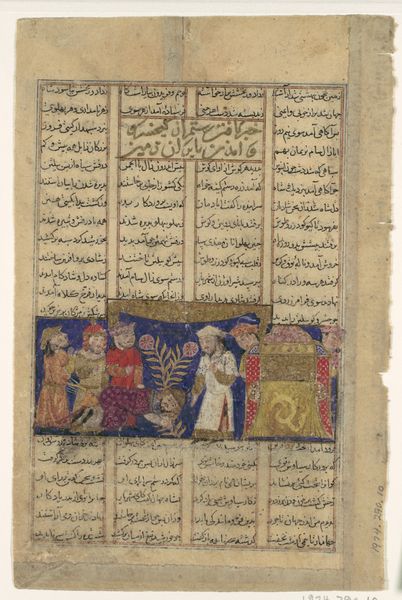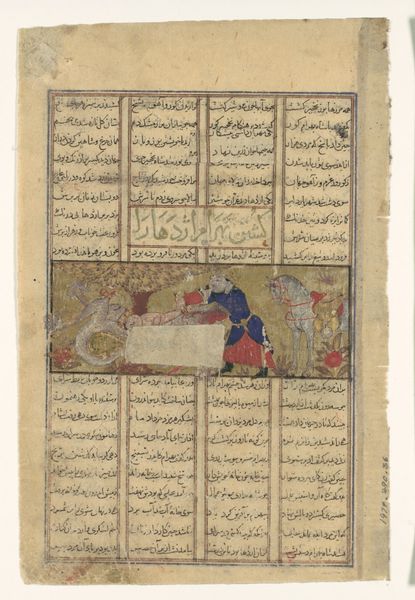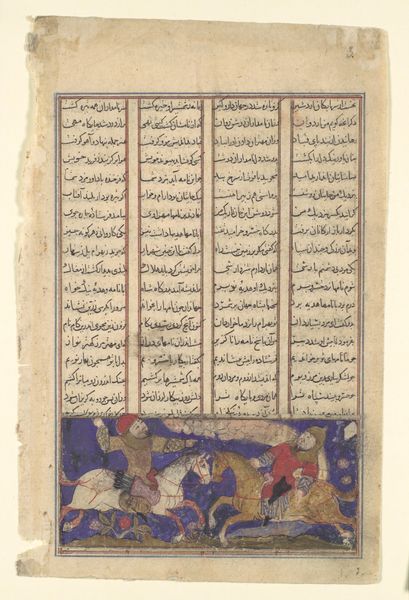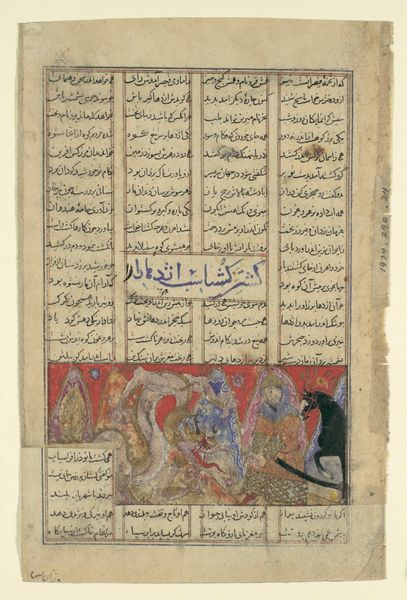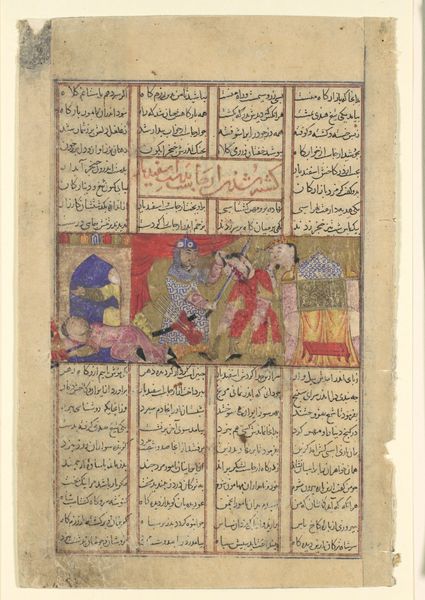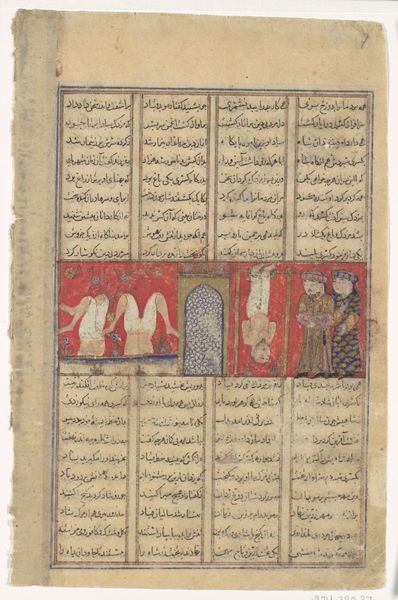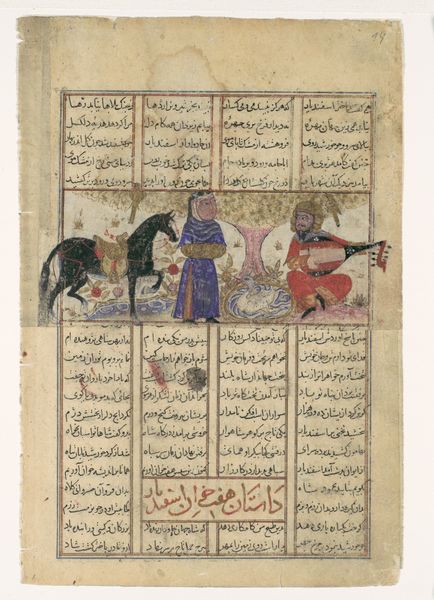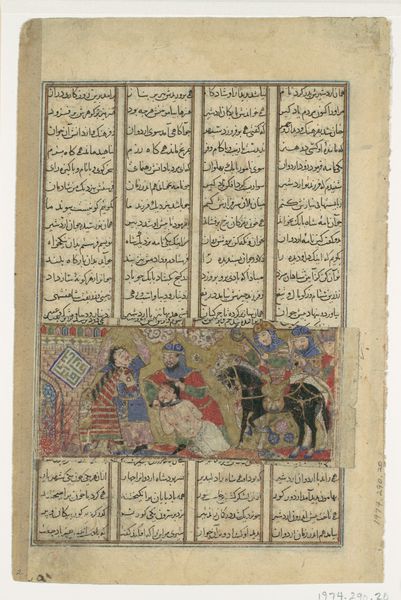
"Gustaham Slays Lahhak and Farshidvard", Folio from a Shahnama (Book of Kings) 1305 - 1365
0:00
0:00
painting, watercolor
#
medieval
#
water colours
#
narrative-art
#
painting
#
landscape
#
figuration
#
watercolor
#
islamic-art
#
miniature
Dimensions: Page: H. 8 1/16 in. (20.5 cm) W. 5 1/4 in. (13.3 cm) Painting: H. 1 13/16 in. (4.6 cm) W. 4 3/16 in. (10.6 cm)
Copyright: Public Domain
Editor: Here we have a page from the Shahnama, or Book of Kings, depicting "Gustaham Slays Lahhak and Farshidvard". It's from Persia, created sometime between 1305 and 1365 using watercolors and ink. What strikes me most is the intense energy captured in such a small space, the chaotic battle rendered with such meticulous detail. What do you see in this piece? Curator: For me, this isn't just a scene of violence; it’s a visual embodiment of cultural memory. The Shahnama itself is a cornerstone of Persian identity, retelling a mythologized history. Consider how the swirling composition and vibrant colours don’t just depict action, but evoke a sense of timeless heroism and the cyclical nature of conflict. Look at the individualized faces; despite being miniatures, each figure carries weight and significance. Editor: That's interesting. So, the faces, though small, contribute to the overall symbolic weight? Curator: Precisely. Think about the symbolism of light and dark too – the bright, almost ethereal palette contrasted with the brutal subject matter. This tension speaks to the constant negotiation between good and evil within the epic narrative, and within ourselves. What resonates most with you in this visual dialogue? Editor: I see what you mean. It’s more than just a battle scene; it's a microcosm of larger themes. I'm also intrigued by how the text is integrated with the image. Curator: The calligraphy is not mere decoration; it's an integral part of the storytelling. It both narrates and comments upon the action, anchoring the image within its literary and cultural context. So, what have you discovered about this piece that you hadn’t considered before? Editor: I’ve begun to see how deeply interwoven art, literature, and cultural identity are in this one illustration. It's far more layered than I initially realized. Curator: Indeed. These illuminated manuscripts serve as powerful reminders of how visual symbols perpetuate cultural memory and shape our understanding of the past.
Comments
No comments
Be the first to comment and join the conversation on the ultimate creative platform.
